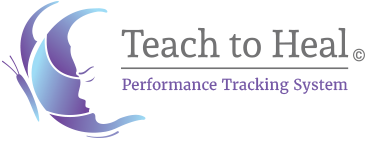
TeachtoHeal.org
The Components of Teach to Heal
Teach to Heal Acknowledges Our Unique Opportunity to Provide a New Experience for Children.
Teach to Heal acknowledges that educators have a unique opportunity, through the platform of schools, to provide a new experience for children that have been impacted by trauma. They can give a child the gift of a new experience with an adult that is not inclusive of fear or inadequacy. This gift can be generalized beyond school toward new possibilities and pathways.
Child Centered
A child centered paradigm focuses on the perception and experience of the child, along with their unique cognitive makeup, to develop individualized strategies to maximize their academic, social, and emotional learning.
Solutions
A solution focused paradigm starts with who we serve and a lens of compassion regarding what they have experienced. It meets the child where they currently are and allows them to determine the pace. It encompasses an “until” attitude that embraces the endless possibilities and resilience of children.
Nurturance
A paradigm inclusive of nurturance understands this work is about underlying developmental skills that have not been mastered. In all other areas in schools, when children struggle with skill acquisition, we alter our instruction and interventions. We do not focus on compliance and consequences. We teach children the skills they have not mastered and never blame or shame them for where they are on the continuum of human growth. Maintaining a lens of nurturance gets everyone what they need.
Trauma Responsive
Trauma Sensitive suggests an awareness and corresponding compassion and empathy about the impact of trauma. Trauma-Informed requires training and congruent application to inform and modify an educator’s practice. Trauma Responsive Schools embrace a holistic systematic implementation that results in a shift in school culture. It becomes the paradigm, the lens, through which educators see the children they serve. They see their role in all components of Teach to Heal and understand that as long as we are meeting new children, we will keep learning lessons from them. This level of systemic responsiveness… is when ALL means ALL.
Student Skill Sets
Teach to Heal has established Student Skill Sets that encompass what is necessary to be successful in school. The application of these skills, at a tier one level, simplifies the expectations for kids and the classroom management language for adults. This consistency established through common language across classrooms, makes school a more predictable place for children who struggle in adult managed places. The combination of predictability and regulatory practice allows students to maintain in the classroom and be engaged in learning which increases their academic performance.
Culture and Environmental Management
Teach to Heal provides guidance to effectively support Culture and Environmental Management. Educational leaders must learn how to build and maintain healthy school cultures. They must establish systems of adult accountability to support all students. Staff must learn to utilize the environment itself as a form of instruction. When traumatized children enter school spaces, they scan the environment looking for risk. Educators must be aware and responsive to the subtle cues that traumatized children teach us. We must also be aware of our impact on them and the learning space.
Role Definition
Teach to Heal provides guidance to effectively support clear role definition. These are children who have not found adults to be consistent, reliable, predictable, or trustworthy. Roles, and corresponding spaces, must be clearly defined and maintained. When roles are not clearly defined, triangulation will occur which reinforces what this population already believes about adults. They need the adults in schools to consistently be responsive, in a calm and non-reactive way, with congruence to their prospective role.
Performance Tracking System ©
Teach to Heal offers the Performance Tracking System (PTS) as a trauma responsive multifaceted tool to effectively support student regulation, skill mastery, and engagement. Tier II and III applications assist students in self-monitoring, gauging their impact on themselves and others, and increasing their capacity to be guided by adults. The PTS provides objective data regarding the conditions and circumstances that result in dysregulation or disengagement. The adults are positioned to make informed decisions about what strategies to adjust and monitor student progress. This increases student’s capacity to stay engaged and learning in the classroom. The PTS also provides logs, summaries, and reports to support the coordination and partnership between school teams and other stakeholders.
Life Space Crisis Intervention
Trauma responsive schools must have a high quality, consistently implemented, intervention modality. The best time to intervene with children who display high levels of dysregulation is at the time of the crisis. This is a vulnerable time and it must be managed by well trained staff. Children need to learn how to slow down their emotional state and gain insight into the reasons for their maladaptive patterns so they can adjust them. School teams need to understand their role in supporting the intervention process. Life Space Crisis Intervention (LSCI) is a clinically informed intervention for children who display maladaptive patterns of behavior. The interventions are informed by what occurs in the learning environment, and the learning environment is informed by what is learned in the interventions.
Effective Teaming
Teach to Heal provides guidance for Effective Teaming. Teaming is a facilitated process which includes the necessary data, knowledge, language, and processes that assist adults serving vulnerable children. Solution focused professional conversations will maximize the effectiveness of the adults and the progress of students. Educational leaders must be able to maintain fidelity and accountability to the purpose and impact of this group discussion. This is the most critical discussion and process we participate in as educators.
For more information on the Teach to Heal, please click here to contact Teach to Heal team.
